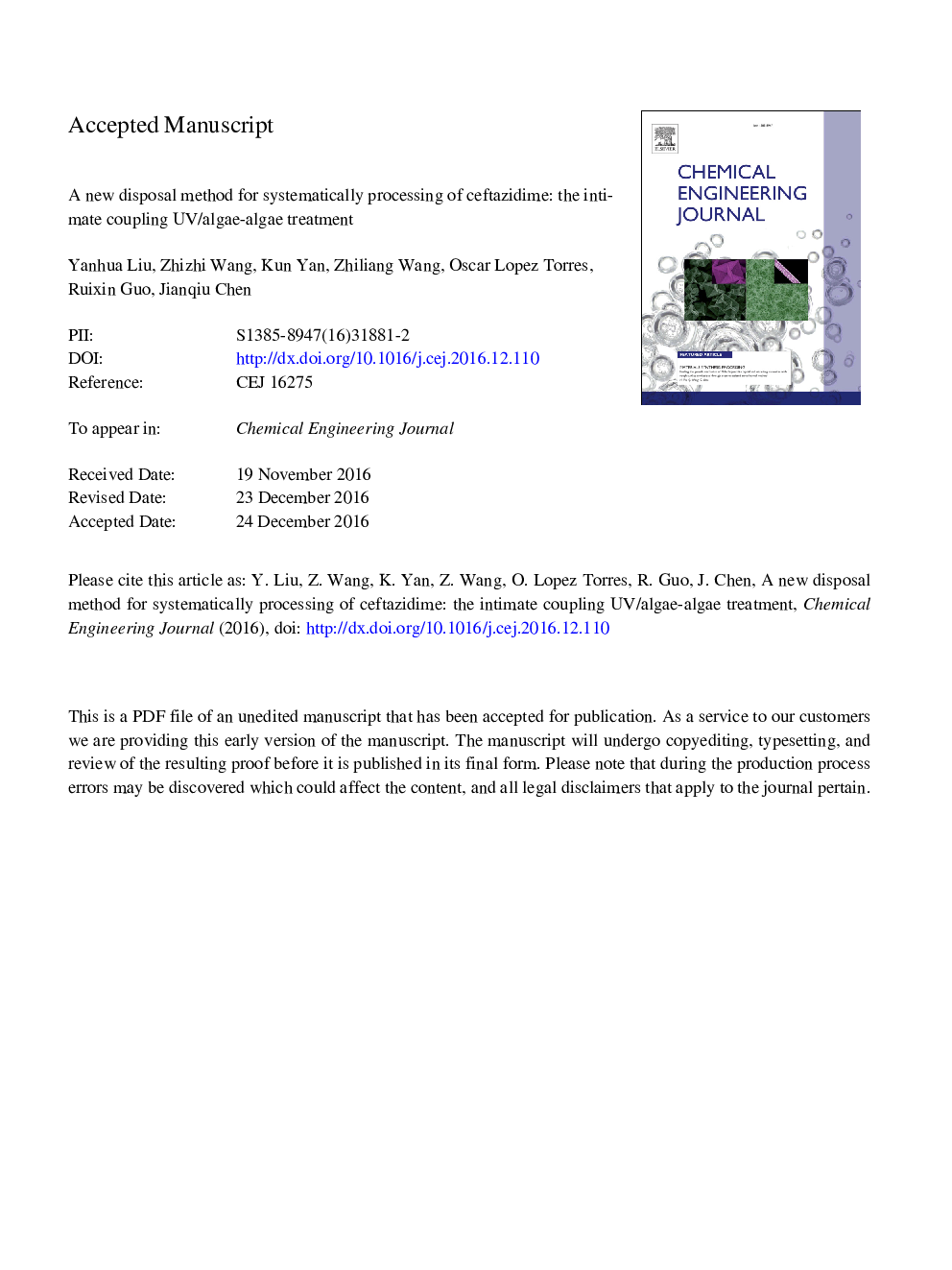| Article ID | Journal | Published Year | Pages | File Type |
|---|---|---|---|---|
| 4763138 | Chemical Engineering Journal | 2017 | 30 Pages |
Abstract
Compared to many previous studies, which focused on the removal capability for contaminants, our present research investigated and optimized the removal efficiency and detoxification function of the integrated UV/algae-algae treatment for ceftazidime. Combined with Chlorella pyrenoidosa, the effectiveness of UV wavelengths, i.e., 365, 280 and 185Â nm in comparison, for the decomposition of ceftazidime in the integrated treatment. And the results showed that shorter wavelength UV in order of 185Â nm (removal rate of 97.26%)Â >Â 280Â nm (removal rate of 97.15%)Â >Â 365Â nm was an important parameter for the decomposition of the target chemical. With the decrease of ceftazidime, the algal toxicity of effluent on Chlorella vulgaris increased significantly. Considering the high toxicity after the removal processes, the artificial enhancement in detoxification with Chlorella pyrenoidosa focused on nutritional patterns and background interferences were also investigated. Low toxicity on algae and rotifers indicated that “clean background” algae under autotrophic condition was the best antidote for the effluent treated by the combined 280Â nm-UV/algae method.
Keywords
Related Topics
Physical Sciences and Engineering
Chemical Engineering
Chemical Engineering (General)
Authors
Yanhua Liu, Zhizhi Wang, Kun Yan, Zhiliang Wang, Oscar Lopez Torres, Ruixin Guo, Jianqiu Chen,
